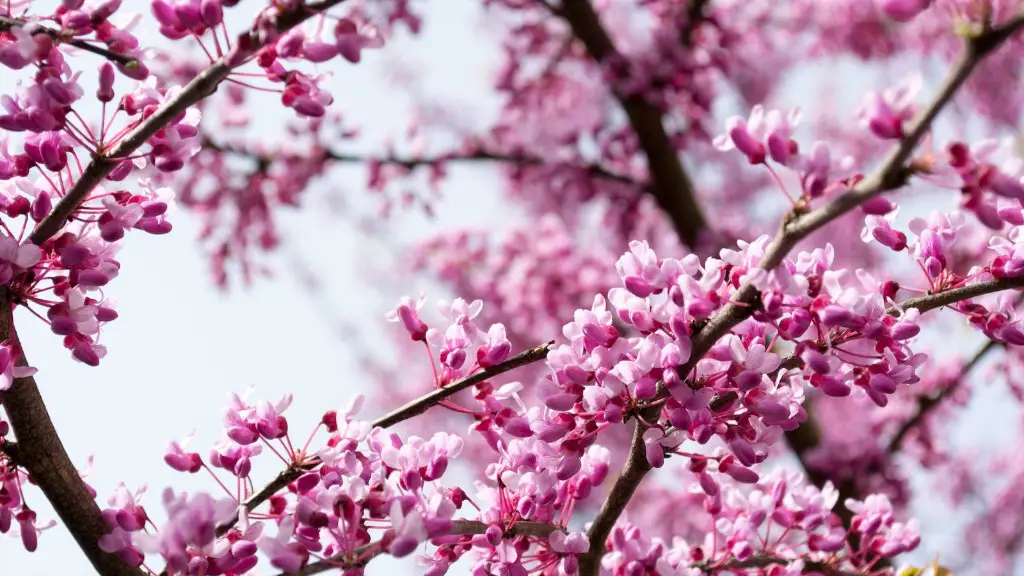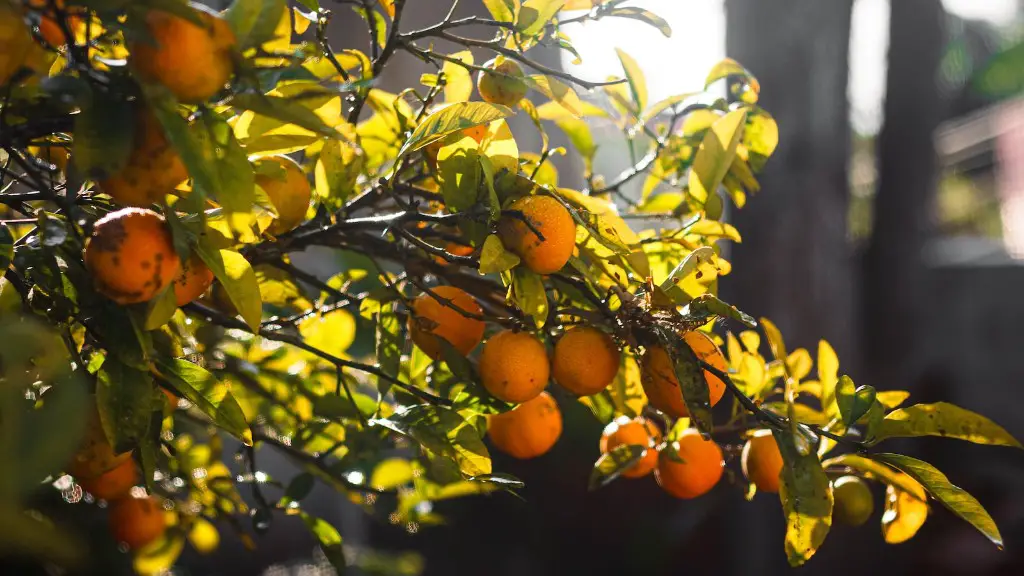Palm Tree Root System: An Overview
Palm trees are a common sight in the tropics and the subtropics, with some varieties reaching heights of more than 180 feet. Due to their size and complexity, it is perhaps not surprising that their root systems are equally complex. This article examines the anatomy of a palm tree root system at a basic level and examines the environmental roles they play.
The vast majority of palm trees generate shallow, fibrous root systems which are highly efficient at gathering water and nutrients from the soil. These root mats, which grow from a thin crown that emerges from the soil surface, are the most visible part of a palm’s root system. In the tropics, where a shallow root system is ideal for collecting the much-needed water and nutrients, palms appear to be highly adapted to their environment.
The roots that form the surface rhizome, or rhizomes, grow downward in search of water and nutrients. The deeper they penetrate, the better the potential for obtaining these essential elements. As the root system grows, it also aids in anchoring the palm tree in the soil, protecting it from wind and other natural disturbances.
In addition to the surface rhizomes, palm trees have another type of root: a so-called pneumatophore system, or aerial roots. Although rare, these specialized structures are found primarily in mangrove forests and coastal wetlands. This type of root typically grows in between the soil particles, using air to breathe. By adapting the palm tree to flood-prone environments, this type of root system can help to protect the tree from flooding damage.
Forests of mangrove swamps, where the majority of the pneumatophore-dependent palms are located, are essential habitats for countless creatures. The webs of roots create important nurseries for fish and create a suitable environment for other animals, such as crabs and mollusks, to find shelter and breed.
At the same time, these wetlands are natural safeguards against floods and coastal erosion due to the root systems of the palms and other vegetation that hold the soil in place, preventing it from washing away during surges.
But palm root systems do more than just provide anchorage and a home for animals. They also act as natural filters for the air, trapping and absorbing harmful pollutants before they reach the atmosphere or ground.
In addition, the fibrous mat of roots found widely in tropical environments is a haven for microbial life, providing food and shelter for a variety of micro-organisms and fungi. The diverse communities of microbes, in turn, enhance the fertility of the soil and protect the tree from diseases.
Soil Type and Structure
To understand the anatomy and importance of palm root systems, one must consider the different types and structures of soils in which they occur. Generally, most palms grow best in soils that are high in organic matter, such as decomposed leaves and other organic material. This type of soil tends to be light, allowing the roots to penetrate easily and deeply.
Soils in mangrove forests, however, tend to be heavy, packed down, and salty. This unique environment still allows the surface rhizomes to grow and reach out underneath the branches, but the pneumatophores are especially adapted to such soils and can even grow in the absence of oxygen. By allowing the trees to survive in such a difficult environment, they aid in the conservation of these vital habitats.
Additionally, palm root systems may help to control surface flooding and runoff by creating channels which direct excess water away from the trees. This type of root system is also designed to maximize water storage, as the water-storing roots of some species can grow to several times the diameter of the tree itself.
Finally, the root mat serves as a natural retainer of humidity, allowing the tree to conserve moisture during the dry season or when the water table has receded. In this way, the root mat can reduce stress on the palm, making it more resistant to drought.
How a Healthy Root System Promotes Healthy Trees
A healthy root system is essential to the health of a palm tree, as it is the primary route for nutrients and water uptake. Hence, it is important to ensure that the soil around the tree is adequate for the roots to grow properly. Compacted soils, for example, make it difficult for water and air to penetrate the root system, reducing the tree’s ability to absorb essential nutrients and water.
Moreover, palm roots are very sensitive to salt, an element which can build up in the soil layers in saltwater coastal soils and can damage the root system if it reaches high concentrations. Prolonged exposure to high salinity levels can stunt the growth of palms and even cause death. Therefore, it is important to regularly monitor and adjust the soil salinity around a palm tree.
Urban Areas and Their Effect on Palms
Unfortunately, the root systems of palms in urban areas are often hindered by their environment. Unfavorable conditions such as soil compaction, shallow soils, excessive cutting of roots, and poor drainage can reduce a tree’s ability to absorb water, absorb oxygen, and grow healthy roots. When root systems are constricted in this way, they become much less efficient at absorbing nutrients and water, which can cause slower growth, paler foliage, and greater susceptibility to disease.
Hence, there is a need to enhance the root environment of urban palms- in particular, to loosen compacted soils and optimize drainage. Commonly employed tactics include root pruning to reduce overcrowding and improve air flow, and the use of a soil amendment such as peat moss, which helps to improve water and nutrient absorption and maximize root growth.
Effective soil management together with a good pruning program can go a long way towards sustaining healthy and productive palms in urban areas. Such initiatives should serve to maintain the health and beauty of these iconic trees for many years to come.
Several Benefits for the Surrounding Environment
The root systems of palms have several functions beyond simply providing sustenance to the tree. For example, the fibrous web of roots of tropical palms provides food and shelter to numerous species such as birds and other animals. Additionally, the roots help to capture droplets of rainfall in wet climates as they draw the water toward the roots and help prevent it from running off.
Furthermore, palm root systems can keep the surrounding soil intact, reducing runoff and erosion. In areas prone to flooding, this root system serves to slow down the flow of water and prevent it from inundating homes, streets, and other vulnerable areas.
In an age of rapid climate change, increased urbanization, and other perturbations to the natural environment, the importance of palm root systems should not be overlooked. Their adaptability and far-reaching benefits, both for the individual tree and for the environment, should serve as a reminder of just how valuable these wonderful plants are.
A palm tree root system plays an important role in helping the tree to survive during extreme weather conditions. The stronger and deeper the roots, the more successful the tree will be at balancing its water needs amid heat and drought.
In dry climates, where the water availability is low, the deep roots can reach down below the dry layer of the soil and collect moisture. This allows the tree to survive days or weeks of low rainfall. For palm species which grow in the temperate areas with medium to high temperatures, a high tolerance to soil salinity is also essential in order to keep the roots strong and healthy.
At the same time, the root system plays a role in combating heat stress by releasing stored carbohydrates. In warm climates, these stored carbohydrates provide the energy needed to produce seedlings and stimulate growth.
Moreover, deep root systems also help to cool the soil by transferring moisture from the depth to the surface, creating a cooling effect even on the hottest days. Overall, a healthy, complex root system is essential for a palm tree to thrive in extreme climate conditions.
Selecting and Planting the Right Palm
For a palm tree to be able to establish a healthy root system, it is paramount that it is of the right species and is planted in the right location and soil. Ensuring an ideal environment for the tree’s growth will help it establish an efficient root system and also help it cope with environmental stress.
When selecting a palm species and determining a location for planting, factors like local climate, soil quality, and exposure to wind should be taken into consideration. Additionally, it is important to remember that the deeper roots will not be visible at first; so patience is required when planting a palm tree and expecting the root system to develop and flourish.
Finally, to supplement the tree’s growth and encourage the development of a healthy root system, fertilizers, biostimulants, and other soil treatments should be considered. Not only will these treatments provide extra nutrients to the roots and help to maximize their growth, but they can also protect the palm from diseases or other threats.
Conclusion
In conclusion, the root systems of palm trees are an integral part of their anatomy and their environment. While gathering the essential water and nutrients for survival, the root structure of a palm tree also plays a crucial role in protecting the tree and its surrounding ecosystem.
For these reasons, it is essential to maintain healthy and efficient root systems in urban areas and areas prone to flooding and drought. Through proper soil management and proper selection of tree species, we can preserve the beauty and elegance of palm trees while also protecting our fragile ecosystems.





